#marsupial mice
Photo

A yellow-footed antechinus (Antechinus flavipes) in Victoria, Australia
by Patrick Kavanagh
#yellow-footed antechinus#marsupial mice#marsupials#Antechinus flavipes#Antechinus#dasyuridae#Dasyuromorphia#marsupialia#mammalia#chordata#wildlife: australia#wildlife: victoria
102 notes
·
View notes
Photo
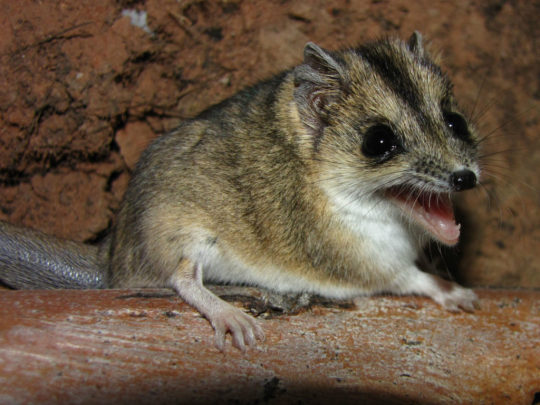
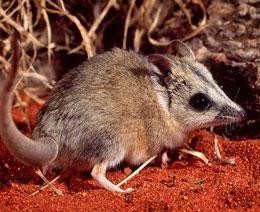
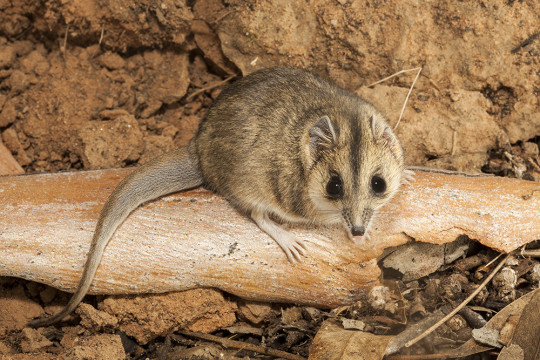
Done In by the Stripe-faced Dunnart
The stripe-faced dunnart (Sminthopsis macroura) is a small mammal found in the dry grasslands and shrublands of Australia. There are three subspecies distributed across the continent; S. m. macroura in central, eastern, and western Australia, S.m. stalkeri in northern Australia, and S.m. froggatti in the Kimberley region. These subspecies diverged from each other millions of years ago, but they bear such a strong resemblance to each other that the distinction was only recently discovered via genetic testing. Although they’re also known as the “marsupial mouse”, S. macroura is not a member of the rodent family. Rather, it’s in a separate family: Dasyuridae, a group of marsupials that also includes quolls (Dasyurus spp.), the Tasmanian devil (Sarcophilus harrisii), and the now-exctinct thylacine (Thylacinus cynocephalus).
S. macroura is one of the smaller marsupial species, at only 15-19 cm (6-7.5 in) long. The tail accounts for nearly half that length. The species is sexually dimorphic, with females usually weighing about 15 g (0.17 oz) and males coming in at 25 g (0.88 oz). Otherwise the sexes are identical: pale grey or brown fur with a dark stripe running down between the eyes that gives the species its namesake. The coloration allows the stripe-faced dunnart to avoid predators like snakes, hawks, and foxes.
Breeding for the stripe-faced dunnart occurs from July through February, and females can produce two litters in a season. This species has the shortest pregnancy period of any mammal, taking only eleven days from fertilization to birth. Joeys remain the mother’s pouch for an additional 40 days, and she can carry and nurse up to 8 young at a time. After they leave the pouch the joeys will stay with their mother for up to 30 days, at which point they’re weaned. Females become sexually mature after only 4 months, while males take up to 9 months to mature, and both sexes can live up to 4 years in the wild.
Outside the breeding season, S. macroura is fairly solitary. Individuals maintain home ranges, although they’re generally not territorial. Within these home ranges, nests are made from grass and leaves or from digging burrows. At times the stripe-faced dunnart may share a nest with up to 8 others, although these arrangements are usually temporary. The species is nocturnal and spends much of its time foraging for insects and small vertebrates like lizards or mice. When food is especially abundant, extra fat is stored in the tail, which enlarges and becomes carrot-shaped. In the winter, individuals will enter a state of torpor, in which their metabolism slows and their body temperature lowers to reduce energy consumption by up to 90%.
Conservation status: Although the IUCN has rated the stripe-faced dunnart as Least Concer, this species is threatened by overgrazing and trampling of their native grasslands. Habitat clearing and fragmentation are also harmful, as are feral cats which directly impact the species population.
If you like what I do, consider leaving a tip or buying me a ko-fi!
Photos
Australian Wildlife Conservancy
Jeremy Ringma
Gerhard Körtner
#stripe-faced dunnart#Dasyuromorphia#Dasyuridae#dunnarts#marsupial mice#marsupials#mammals#grasslands#grassland mammals#scrubland#scrubland mammals#oceania#australia#north australia#central australia#west australia#animal facts#biology#zoology
99 notes
·
View notes
Text

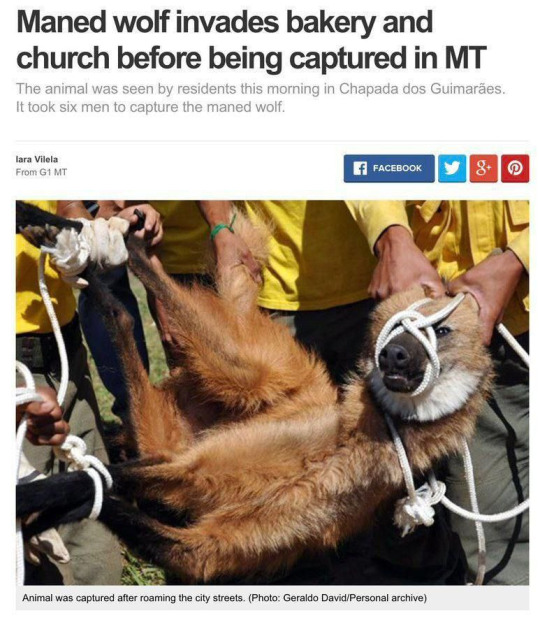
I need a heist movie featuring these two.
#maned wolves pose little threat to people btw. They eat small animals like mice n lizards.#maned wolf#canidae#canid#carnivora#placental#common brushtail possum#marsupial#trichosurus vulpecula#trichosurus#possum#phalangerid#diprotodont#mammal#vertebrates#animals#cute animals#thievery#gnome energy#bakery#sweets#australia#brazil#southern hemishphere#pastries#hiest#hiest movie#movie idea
7 notes
·
View notes
Text

Cantinflas the Opossum or "Mice" (Sorry) By Foxtown2002 on Deviantart
Cantinflas (C) Himself
Art (C) Foxtown2002
6 notes
·
View notes
Text
the state of queensland is just like fuck off and die if you want to own a rodent. do not bring that shit up here.
#specifically rabbits and ferrets are illegal (neither of which are rodents)#i have no idea if rodents are legal pets here or not#my brain just classifies all small non-marsupial mammals as rodents. they are all the same thing.#foxes are also a kind of rodent btw#to me#so are skunks#ok i just checked and gerbils are also illegal to own as pets here. and leopard geckoes.#rats mice and guinea pigs are all allowed though
1 note
·
View note
Text

"Bird" #41 - the Virginia opossum
Did you know there are lots of species of opossum other than the well-known dumpster cat? I didn't! (Maybe just because I'm outside of America tho) There are 126 species found in the Americas. They range from looking like weird squirrels, to tiny lemurs, to mice, to stoat-like.
Opossums are not to be confused with possums. Possums are also marsupials, but are found in Australia and more related to kangaroos than the American opossum.
Suggested by @/iamtheonethinginlifeicancontrol & anon
#bird of the day#kind of#i gave it feathered wings is that enough to make it a bird#digital art#opossum#artists on tumblr#animal art
34 notes
·
View notes
Text

for context:
i was discussing with my sister about how odd i think bears are (as i am prone to do) and how i find it difficult to sort them into one of the main subgroups of mammals that first come to mind, like are they more catlike? doglike? i feel like i can sort most mammals into one of these categories but bears are just so odd idk where they go. and she (my sister) looks me dead in the eye and goes, "wtf are you talking about? they're so obviously most similar to gorillas."
????????????????????????????????? i haven't stopped thinking about this reply since then cause it is sooo very wrong and honestly just fucking shocking lmao i need to know how other people think about this
(also turns out bears are just from the 'ursidae' family which literally only contain bears and a bunch of extinct animals so i was technically right in thinking that they're odd and separate)
58 notes
·
View notes
Note
What is your position on the debate between contingency and convergence in evolution? As a creator and enjoyer of speculative evolution, I imagine you might fall more towards contingency, but I'd still be curious on your overall thoughts on it, and on how different a separate run of evolution on an earthlike planet would really be.
Hmm.
Biologists usually distinguish two types of resemblance among organisms: analogy, which mostly regards general function and appearance and is driven by common conditions, and homology, which mostly regards deep structure and is driven by common ancestry.
All the limbs of land-dwelling vertebrates and their descendants are made of one long bone, followed by two parallel long bones, followed by a maximum of five (except in ichthyosaur flippers) series of digit bones. This you see from frogs to seagulls to horses to manatees to moles -- the descendants of proto-amphibians such as Ichthyostega -- but not in any other animal group. This is the canonical example of homology: there is no reason for such different limbs with functions so different to share the same 1-2-n pattern except inheritance from a common ancestor. On the other hand, the wings of birds and those of insects, or for that matter their eyes, are so different because they arose independently. The common features in the wings of a hummingbird and a dragonfly are due to the same physical constraints, and that is analogy.
Sometimes it depends from the level of analysis: bird wings and bat wings are analogous as wings -- their flight surface is achieved by different means, feathers in one and skin in the other -- but homologous as vertebrate forelimbs -- they have the same 1-2-n sequence of bones, and their development is regulated by the same genes.
There are, of course, physical reasons for structures to resemble each other: everything that moves quickly through water needs to be more or less spindle-shaped; everything that grows past a few hundred grams on dry land needs some sort of rigid support; photosynthesizers and filter-feeders need fractally branching structures; and so on. Compound eyes and exoskeletons really are more efficient at smaller sizes, camera-type eyes and internal skeletons at larger, so that's a reason other than ancestry for insects and birds to be so different; but the largest butterflies are bigger than the smallest hummingbirds, so it's not just a matter of scale; and the eyes of tunas are more like the eyes of eagles than like the eyes of squids, so it's not just a matter of environment.
Some classical examples of convergent evolutions overstate their case a bit: sharks, ichthyosaurs, and dolphin all started from the same aquatic vertebrate chassis, so their similarity is not pure environment-driven convergence. (But it is a bit: from the same chassis you can also make a turtle or a crane.) Similarly for marsupial mice and moles vs. their placentate equivalent, none of whom gets that far from the original mammal model to begin with. When you get a bit farther, you find that the Australian equivalent of a horse is not an almost identical "marsupial horse" but a kangaroo, for reasons that have to do with marsupial birth. It's the same for the now-famous case of carcinization, which only applies to decapod crustaceans -- it's not even universal for crustaceans in general! If you try over and over to make an open-water pursue predator out of the vertebrate plan, you'll get similar results: the shark, the tuna, the ichthyosaur, the dolphin. But try the same with the mollusk plan, and you get a squid.
Now, convergence is likely to occur on other planets, because anything recognizable as life will have similar requirements and meet similar challenges. But it will be much more subtle than making planets full of blue horses and humans with weird eyebrows (I can't overstate how complex and specific the history of our body shape is). Assuming an Earth-like planet, for example, I'd expect its surface ecosystems to be overwhelmingly based on photosynthesis, its "plants" to have branching shapes with flat light collectors, and its largest "animals" to be bilaterally symmetrical with eyes, intestines, and skeletons of some sort. But that still leaves an enormous amount of variety, based both on ancestry and on smaller-scale micro-environmental constraints: note that the description of "animal" I gave fits equally a tarantula, a giraffe, a snail, and an axolotl.
TL;DR: many important traits of living organisms are made necessary by physical and environmental constraints, but there's an immense variety of ways to develop them, and that is mostly going to be driven by contingencies in ancestry. In my opinion, that is.
As readings, I'd recommend The Equations of Life: How Physics Shapes Evolution (Charles Cockell, 2018) and Convergent Evolution on Earth: Lessons for the Search for Extraterrestrial Life (George McGhee, 2019) as summaries of the physical constraints and useful strategies that are going to arise over and over in living systems, as well as this brief paper on the evolution of complexity in alien life. Note how much similarity they predict, but also note how much they don't!
Thanks for the question! <3
23 notes
·
View notes
Text

I knew I wanted to do Bestiary Posting this week, but I'm gonna be super busy in the coming days, so I had to rush this out right away. So sketch is a bit messy.
At first I thought I knew what critter it could be, but I've been wrong before with my guesses, and then as I started thinking up what I'd like to draw I kept thinking 'oh well, maybe that's what it is; or maybe that's what it is', so suffice it to say, I am not confident in my guess at all.
The Hreksong is cunning and hunts snakes, so my mind went to the mongoose - renowned for it's snake catching skill. Carrying it's young made me think of opossums - in fact a lot of arboreal animals carry their young, so makes sense for it to be arboreal. An arboreal mongoose. The conceiving/birthing through the ears or mouth kind of tripped me up, but I remembered a type of frog that carries it's young in it's mouth, and mouthbrooding is pretty common in fish, so I guess it's not impossible to imagine a more terrestrial animal doing the same (originally did not draw it with an open mouth, and I gotta say the open mouth adds so much charm and horror to this creature; though I am curious if mouth/ear is where it's babies are born/conceived where in the body do they develop? Does it have a womb connected to it's ears/mouth, or is it like a marsupial pouch in the neck? I have so many questions). Of course, being arboreal, it needed reverse counter shading as arboreal animals tend to have. And then it ended up looking like a pine marten. A mouthbrooding pine marten...
Still, I think it would be fun to have your own house Hreksong. The description says they 'roam around in houses', which I can only guess means they are not pets or working animals, and are instead like mice or little brownies that move into your house unannounced, and make mischief in the night. You know, like lapping up all the cream, and stealing only left socks, and mussing up your hair while you sleep. And there's just not a whole lot you can do about it, unless you'd rather be overrun by mice and snakes.
21 notes
·
View notes
Text
Some of y'all realize pests go deeper than flies, spiders, cockroaches, and rats, right ?
Things some people also consider pests:
- literally any bug or insect can be a pest. Butterflies, moths, beetles, mantises, stick bugs, dragonflies, milipedes...
- literally almost every rodent or marsupial or anything similar ( keyword similar ) to a raccoon. Ferrets, raccoons, skunks, sugar gliders, squirrels, chipmunks, bats.. while guniea pigs and hamsters are pets and domesticated, they can still be trained to cause problems
- snakes !!! Snakes can act as pests, too !!
- snails and slugs !!
If it can:
- cause disturbance to livestock
- disturb homeowners
- ruin a home
It's a pest. naturally spiders, cockroaches, termites, rats, and mice are the most common pests, and some of the ones listed above rarely act as pests, but that's not to say they can't do damage at all or even scare homeowners
In other words
Ishtar could very likely have an army of bats, raccoons, moths, and snakes at the ready
" what if the snakes eat the rest " if she can summon them she can train them
#that's not my neighbor#tnmn#tnmn nightmare mode#that's not my neighbor nightmare mode#ishtar ereskigal
14 notes
·
View notes
Text
Minish Variants
So I had a thought: What if the Minish looked different depending on where they live, based on different rodent and rodent-like species?
I mean, we already have Forest/Town Minish, and Mountain Minish, how about Tropical or Desert? Snowy?
Forest & Town: Wood or Deer Mouse
The "default", and most common, Minish variant.
In Minish Cap, the Town Minish are just Forest Minish that decided to move into town, so it would make sense for them to be the same variant; but if they were to be different, I suppose Town Minish could be House or Fancy Mice.
Plains/Grasslands: Striped Grass Mouse
The second most common variant.
These Minish would have either a single dark stripe running down their back, or many light and dark stripes.
Desert: Jerboa and/or Grasshopper Mouse
Jerboas are the funny looking ones with long legs, ears, and a long, tufted tail. They usually move by hopping around and can even run up to 15 mph (24 km/h)!
Also, fun fact: The grasshopper mouse howls (yes like a wolf) and is carnivorous! 😌
Snowy: Lemming (Tundra Mouse)
These Minish would have long fur and live in large tunnel systems under the snow.
Or maybe they'd live in cute little log (stick?) cabins 🥺
Mountain: Yellow-rumped Leaf-eared Mouse or Pika
In Minish Cap, the Mountain Minish we meet are actually just Forest Minish that moved into Mt. Crenel, but if they were to be different, I suppose they could be the yellow-rumped leaf-eared mouse.
These mice in particular have been found more than 20,000ft above sea level, on the summit of the Llullaillaco volcano!
Another option would be the Pika (which isn't actually a rodent, but is instead a lagomorph) as they also live in the mountains.
A defining trait of the Pika is their various calls/songs, which would fit the Mountain Minish's tendency to sing the "Ting Tong" song.
Tropical Rainforest: Feathertail and/or Sugar Glider
Though not rodents (they're marsupials), glider Minish would be cute! Unlike the Forest Minish, who live in mushroom houses on the forest floor, these Minish would live up high, in the tallest trees.
Aquatic: Water-rat (Rakali)
These Minish would be semi-aquatic, with partially-webbed hind legs and waterproof fur. They would also be the best swimmers out of all the Minish variants.
...and mostly carnivorous, with a focus on aquatic animals. That too.
#I just love the minish okay? lol#loz mc#the legend of zelda#the minish cap#minish headcanons#picori#I wish nintendo would bring them back for another game 🥺
7 notes
·
View notes
Text
I know this is like dying but I’ve waited so long to post this cuz I wanted to get as much as I can but since I haven’t seen another alternate m*leven ship name in forever, I’ve decided to post all the alternate m*leven ship names I’ve seen.
milkvan
macarena
mumble
miley cyrus
melvin
milkshake
mitochondria
Keke waka
milkdud
Misaligned Fallopian Tubes
machine gun
milkcurd
mildew
milkman
moonshine
menstruation
midleven
Macroeconomice
microwave
Macadamia nut
monkeyvenom
masturbation
mythology
Minotaur
malware
malnutrition
Minecraft mobs
moon landing conspiracy
margerine
murmers
milkyway
mcchicken
monsoon
melted marshmallows
mango
maroon 5
Of Mice and Men
Madagascar
Marty McFly
melville
Milk of Magnesia
Milkwaukee
Milkchocchip
M-1 Rifles
Meerkats
Mlvn
M&Ms
McDonalds
McVans
Milehighclubs
Mitskivans
Mychemicalromance
Monsterhighs
Millennials
Malnourished Skin
Mona Lisa
Mushroom Raviolis
MK-16
Mascara
Monoclonal Antibodies
Mamma mia
Mealworm
messenger
mentoses
milkweed
microbe
mimetite
morsels
mozzarella sticks
milkchicken
minestrone
macaroni
Methamphetamine
Markiplier
milkbag
machine gun kelly
zoo wee mamas
Milevensies
molotov
mismatches
mandalorian
mildred
magdalena bay
milulu
Milkmaids
minimum wages
mailman
malt vinegars
moshimonsters
mids
mocha monsters
Marley and Me
Mitosis
three musketeers
milkshit
Miranda Sings
motorola
mobility exercises
Malnourished Foreskin
miscellaneous
McNuggets
microfungus
minnie mouse
millipede
milkmonsters
monkey ooh ooh ah ah
martians
milquetoast
Manicure
milkbone
Meryl Streep
macadamias
Maple Syrup
mildew
multivitamins
mascarpone
mikeisdefinitelyisdefinitelyahetrosexual
magnesium
magician
mickey mouse clubhouse
Macaulay Culkin
Molotov Cocktail
meatball choppers
milky cereal cup
monkey see monkey do’s
meth lab
millyrocks
Milklovers
midvans
mac and cheese
mindflayer
Marvin martians
malteesers
minivan
MilkTit
milk and cookies
milklords
Tickle Me Elmos
minnions
mad mothers
mariposa
Milkbag
mitskivan
Mucinex
mixed signals
Milkytitty
mighty morphin power rangers
🥛🚚
Milkvillains
Mosquito bites
Mug cakes
Moldy milks
micropenis
maggots
Machupichu
mephistopheles
malted milk
musculoskeletal
Mcdonald's happy meals
moose mooses
macaroni n cheese
maternity leave
moustache mountain
mocha cake a la goldilocks
Mcstuffins
Mcmuffin
Nickleback
MonkeyBall
mistletoes
moo moo
microphone
master of puppets
middleman
Monster of Men
Melted Cream Cheese
milkythooth's
meltdowns
mosh pits
Mikinam
Megatron Titty
MontyPhyton
malaria
michigans
malibubarbie
Mockingbird
Machine Gunner
Milkbone
Milftits
Mcflurry
mangos
metric system
milkydudes
milk cartons
milklevel
Milan champions league
mcladdles
mustard
malfunctioning minotaurs
moaning myrtle
meep city
mount vesuvius
millyrocker
mango salsa
milkspill
Mitochondrial Disease
m'leven
michigan
Machine Gunner
Maybelline
Mascot
Moldy Mozzarellas
malt powder
machine gun kelly
Manila papers
Merlin’s Beard
mackerel
Moldymilk
mariachi
mein kampf
melevenene
Miku
mediocre meat loaf
Mambo Jambos
Microscope
my little pony
Menstrual cup
Mothman
Megamind
Msg
Marvins
Mesopotamias
Meralco
misanthropic villains
Mishawaka
Moldy bread
Marsupials
Marvin
Melon rinds
Moondance
Moldy macaroni
Magical miscarriages
Mauled maggots
Machine gunners
Moscova
Mondays
Momento Morí
mitochondrion
Megatron
Misused toilet
meeting micky mouse
melatonin deficiency
Minions
Milkovitch
Manly-man
McLovin It
Mexico
milkytruck
molars
Married Salamanders
mister mustard
Mario Kart
Mouse rat
marshal mathers
militia
milebin
Mewtoo
Margaritas
Mick Jagger
Elr
Milkwaffers
Milkweven
Mud Stain
Mileperson
milerescent
Milanese
Manatee Turd
Magistrate
Mario run
Mint-chip icecream
Milkwaffers
Microsoft
miléveune
Mesothelioma
Moomoos
matchstick
malteser
morallysus
Macronutrient
Miel
Milanese
milkies
Microsoft11
mineral water
multiplier
Mario Kart Wii
mild salsa
Minnesota
motorcycle
Minecart
Maltodextrin
muffin mans
Midlife crisis
Mortadella
Matcha
Microdickvan
Mac & cheese
Middle aged vans
Super Mario 64
Metamorphosis
Malcom in the middle
Magic Mike
711
Marijuana
mozzarella
Microbial virus
MySpace
Materasso Eminflex
microsoft software protection platform
Micheal Jackson
Mistyped
Miscarriage
Magnetic dipole
Marble Countertop
Michelin star
Milkkawaii
Mathematics
Microgodzilla
Milkchunk
milktruck
malooban
Masachussets Institute of Technology
Mango Juice
Mary had a little lamb
Menthols
Mark of Athenas
mendocino
milwankas
171 notes
·
View notes
Photo

Long-Tailed Mouse (Pseudomys higginsi)
Family: Typical Mouse Family (Muridae)
IUCN Conservation Status: Least Concern
Found only on Tasmania but widely distributed across its home island, the Long-Tailed Mouse is one of relatively few non-marsupial mammals native to Australia (with its ancestors having likely drifted from southern Asia on beds of vegetation around 6-8 million years ago.) While members of this species can inhabit a wide range of habitats they are most abundant in wet, humid forests, and are largely nocturnal (spending the day in a burrow dug in soft, damp soil, although in areas where predators are scarce they may become increasingly active during the day.) Long-Tailed Mice feed on insects, fruits, ferns, mosses and other forms of damp vegetation (often taking in so much water when eating that they do not need to drink,) and dig networks of tunnels across the forest floor near their home den to allow them to forage without being detected by predators such as Australian Masked Owls, Eastern Quolls and invasive Domestic Cats with which their natural predators are forced to compete. Adults of this species breed mainly between November and April (although mating may occur at any time of year following heavy rainfall, with the population of this species often exploding in size following rainy periods,) and it is typical for a single female to produce two litters of 2-4 young in each breeding season. Newborn Long-Tailed Mice are furry but unable to move, see or eat, and remain in their mother’s den where they are protected and fed on milk until they are around 40 days old. Although a mother Long-Tailed Mouse will typically leave her young in their den when she goes out to forage, she is able to carry them away from the den and to safety in the event of an attack by having them cling to her underside using specialized blunt, inwards-facing incisors with which they are born.
--------------------------------------------------------------------------
Image Source: https://www.inaturalist.org/taxa/45216-Pseudomys-higginsi
#long-tailed mouse#mouse#mice#rodent#rodents#mammal#mammals#zoology#biology#mammalogy#animal#animals#wildlife#Australian wildlife#tasmanian wildlife
76 notes
·
View notes
Text
Post about Aussie animals bc they're fucking terrifying
To start, this is a magpie.

Spring / late summer is called "magpie season" here and if you walk under their nests or around the tree that their nest is in they will swoop
That beak and claws? Razor sharp. If you're a cyclist you're dead
Magpie helmets are a common sight during this time (you can literally buy them online)
Next: cassowary

See that weird lump thing on it's head? That's bone. They will run at you and impale you with it.
See one of these in the wild? Run for your life.
Cassowaries have three-toed feet with sharp claws. The inner (first) toe has a dagger-like claw that can be ~125 mm
They sometimes kick and you do not want to be within range when they do
These are pretty big at up to 1.8m tall with the males at 29-55kg and the females up to 76kg
There is a large variety of spiders in this fucked-up country but my personal favorite is the Queensland bird eating tarantula.
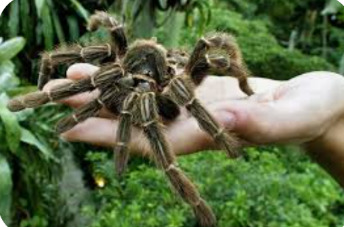
As you may have guessed, this fucker eats birds.
They're more commonly found in the warmer and more acrid regions of Australia, which means you'll probably find them in Queensland and around Darwin.
This wonderful animal I'm going to show you next is called the platypus.

They're probably my favorite animals they're so weird 😂
They're like otters but they have a bill and webbed fins like a duck
They're mammals but they lay eggs and theyre amphibious
The males have a venomous spur on their inner hind ankle
And the babies are called puggles which I absolutely LOVE
Ok next up is the emu

These things are relatively friendly
You can buy these little packets of emu food from certain servos which you can feed to them (they'll eat out of your hand)
Their eggs are fucking huge (average height 13x9cm, weight 450-650g) and so are they (average height 1.75m, weight 50-55kg)
KOALAS (not koala bears)

These balls of fluff are herbivores and their diet is mainly made up of eucalyptus leaves
They live in eucalypt trees and can sleep for up to 20 hours a day because the leaves they eat don't contain much nutrition
Koala babies are called joeys ♥️♥️
They're marsupials and the females give birth to undeveloped joeys which crawl into the mothers pouch where they stay for the first 6-7 months of their lives
Joeys are fully weaned when they're around a year old
Kooaburras ~~
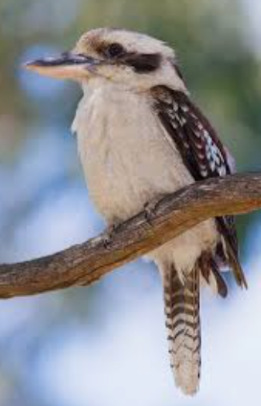
Kookaburras are so annoying sometimes
They almost never stop laughing
And they steal your food
Once when I was down south with my parents (my sister hadn't been born yet) we were at this pub in the bush and I had fish and chips
In a tree relatively close to where we were sitting there was a kookaburra
And out of the blue it sWOOPED DOWN AND STOLE THE BATTER OFF MY FISH
And then I apparently started crying (I was like 4 give me a break)
Anyway
Kooaburras are almost exclusively carnivorous, eating mice, snakes, insects, small reptiles, and the young of other birds
They dont usually eat fish though they are known to take goldfish from ponds (I'm realizing now thats probably where my goldfish went)
#yes i love how fucked up my country is shut up#if you want me to do an animal i didnt do here put it in the comments#animals#australian animals#australia#idkwhattoouthere123
7 notes
·
View notes
Text

welcome to my account! 🐭🩷
crea or polly || she/squeak || genderfae lesbian || ⚢ ∞
my twitter ✧ archive of my transfem Apollo stuff

✧ #crea.talks ← all my posts can be found under here.
✧ #crea.png ← all images of mine can be found here.
✧ #crea.draws ← all my art can be found here. ✧ #crea does textposts ← as suggested all text posts can be found under this tag. ✧ #crea art pile ← tag for other people’s art that I find cool. ✧ #fav vids ← contains all my fave videos. As you probably guessed. ✧ #justquill brainrot ← future tag compiling all my insanity about justquill. Including other people’s posts and art. ✧ #transfem apollo justice <- as the name suggests. All posts about transfem apollo are in here. I’m very normal. ✧ #minecrea ← my tag for Minecraft and Minecraft adjacent content. If you do not want to see the little block fellas mute that tag.
If you’re looking for a post past 3/4/24 there’s a slight chance you won’t be able to find it because i haven’t updated or used some of these tags before that.


I’ve been stuck in the fandom hell ive been hyper fixating on ace attorney for the last year or so. I’ve played AA1-5 and am working through 6. I have not finished tgaa or started aai. That’s mainly what my blog focuses on but my other interests include:
✧ Hermitcraft, Magical girls (Madoka, Precure etc), Splatoon, Ghost trick, Old Web, Mice & other marsupials, aistf (unfinished mind you), Adventure time, Mob Psycho, revolutionary girl utena and as of recent x files
No bigots allowed on this blog I will punch you.
don’t follow me if you’re an nsfw blog or a “minors dni” blog, someone who regards themselves as a “proshipper” or “anti anti” (I am not arguing w u over this get a job im dead serious.) engage actively in slur discourse or queer discourse. Also no zionists.
outside of that if I don’t like you I’ll just block! peace and love on planet earth!
I draw my Apollo justice as transfem. Do not tag my posts with her as genderbent. Do not get weird about the hc aswell. It’s a personal comfort thing done for me. My Apollo design is literally based off me. Just be nice. Thank you.





13 notes
·
View notes
Note

ok this is thylacoleo its a MARSUPIAL (!!) carnivore (!!!) from australia (!!!) at least until global warming in the late pleistocene and some dudes that discovered fire took her OFF THE MAP (like many ice age mammals) and now well animals just dont get that big (some other marsupial carnivores are/were the thylacine, quolls, some species of mice etc)
ntice the face. ok thylacine evolved into eating meat. so if you look at a skull of it (do that on youir own i dont have it on hand) you can see the incisors are actually molars that jut forward and create one Super Tooth to tear meat. these dudes were NOT originally carnivorous! so why do they have those big teeth? well look at this shit

this is its thumb, which is rotational (kind of like a monkey i think) and has a big honking dewclaw on there (like a cat) so its usually called "the marsupial lion". but its elbow joints are not locked like a lions, and are unique to thylacoleo in that they have a lot more rotation power! so its actually thought that those big rodent teeth were to GRAB ONTO PREY and the CLAWS were what they used to kill once they were grappled on! thats very unique (some sabercats also used their big teeth to stab in prey so maybe it was an ice age trend) anyway
i actually had no idea there were even prehistoric marsupials, this is cool as shit!!! thank you i will be sharing this with everyone i know now
9 notes
·
View notes